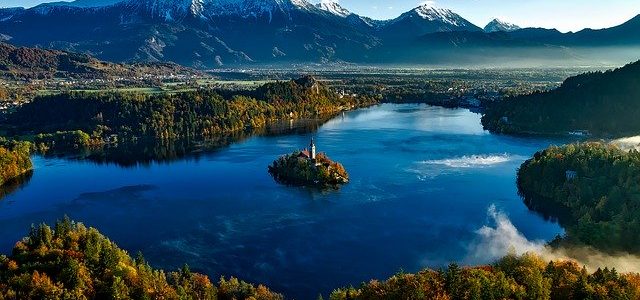Lakes and ponds are both water bodies and it may be difficult to recognize the two from an administrative perspective. From the naming show there is no unmistakable difference among lakes and ponds, and they are dependent upon the state water quality principles. Laws and guidelines which oversee water bodies see no difference among-st a lake and a lake.
What Is A Lake?
A lake is a characteristic body taking a basin structure loaded up with water and is encompassed via land. Lakes differ in shapes and sizes. Lakes are bigger and more profound than ponds, and they are unmistakable from tidal ponds and are not part of a sea. Rivers and streams feed lakes, and a large portion of them have outlets which empower water dissemination in the lake. Be that as it may, with industrialization, there are different lakes made by men for modern and horticultural use. They are called human-made lakes. These human made lakes are named arbitrarily and you can make it simpler by utilizing a device like Lake Name Generator. Water from artificial lakes is utilized for the water system, age of hydroelectric force, residential use and recreational purposes.
What Is A Pond?
Some Ponds are regular while others are human made. Here and there ponds emerge from floods along a river course, or they might be framed in a disconnected misery. They are commonly littler contrasted with lakes and most ponds are developed for some purposes like water systems and fish cultivating. Be that as it may, not all ponds are shallow. A case of a bigger lake is Island Pond in Derry which covers 500-section of land and has a profundity of 80 feet beneath the surface. Island Pond is far a lot greater contrasted with Echo Lake in Conway which covers 14 sections of land and 11 feet far beneath the surface.
What’s The Difference?
Most would state it’s size, a lake is greater, a lake is littler. That is in reality wrong. From government websites to Wikipedia, the data isn’t right. The difference is really a consequence of the profundity.
Ponds, as per limnology are shallow enough where plants could possibly develop over the whole surface. This area, where plants could develop is known as the “photic zone,” which means where the sun’s beams can arrive at the base. It implies that ponds are not so much profound and you can anticipate that they should be somewhat little in size however this doesn’t have any significant bearing in each circumstance.
A lake, paradoxically, has an “aphotic zone,” which means there is an area profound enough that daylight can’t arrive at the base. A lake can be a home for reptiles like crocodiles and snakes too. As they are profound there are more odds of these animals to be available in lakes when contrasted with ponds.
Accordingly, there are some little bodies of water, not exactly a section of land that are sufficiently profound to be called lakes. On the other hand, there are some extremely enormous, yet shallow water bodies, especially in the south that are actually ponds, in light of the fact that their “photic zone” extends the whole length and width. In this way, at any rate with lakes and ponds, size doesn’t generally make a difference. In any case, if you need to differentiate between the two terms the profundity factor can be a factor to decide if it is a lake or a lake.

